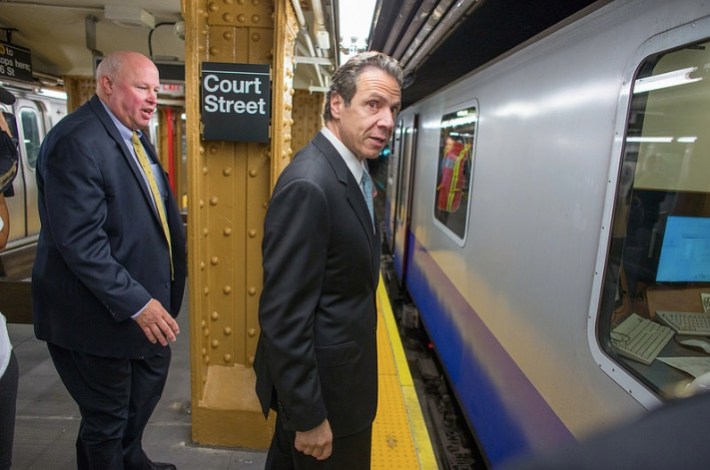
Mayor Bill de Blasio was one of the estimated 400,000 people marching in Manhattan Sunday to urge world leaders to avert catastrophic climate change before it's too late. And he backed it up by having his administration commit to reducing New York City's carbon emissions 80 percent from 2005 levels by 2050. Andrew Cuomo, meanwhile, was nowhere to be found at the People's Climate March, and for good reason. The governor's climate plan consists mainly of a single strategy: Brace for impact.
The de Blasio climate plan is all about buildings, augmenting efforts begun by the Bloomberg administration to make the city's building stock less polluting and more efficient. This makes sense since buildings account for such a large share of New York's carbon emissions, and the city has considerable power to regulate them. While it would be great to see more about transportation in the de Blasio climate plan, City Hall has already set goals to make city streets more walkable, bikeable, and transit-friendly. The administration is doing these things in the name of safety and expanding economic opportunity, not sustainability, but the end result will still be more sustainable streets.
Meanwhile, the transportation infrastructure that undergirds New York's light carbon footprint -- the fundamental reason New Yorkers emit a fraction of the CO2 an average American does -- is not the mayor's to control. The transit system is Governor Cuomo's responsibility, and he's been flaking on it since the first time he robbed from the MTA to pay for the state's general obligations.
On Monday the governor signed a law that will help cities and towns prepare for the effects of climate change. Noticeably absent from the message was the urgency of preventing climate disaster in the first place.
The same day, the MTA posted documents laying out the $15 billion gap in its upcoming five-year, $32 billion capital program. The capital program is how the MTA will keep the transit system in reliable working condition, modernize ancient signals and other equipment, and expand rail and busways.
Governor Cuomo, however, is nowhere to be found as the MTA board takes up the matter of the capital program and how to pay for it.
Borrowing $15 billion is not an option. A growing share of the MTA's annual budget can't be spent on running trains and buses because the authority's debt has already ballooned thanks to borrowing for previous capital programs. Its outstanding debt now stands at $34 billion. Servicing that debt is expected to cost $3 billion annually by 2018 -- triple what the MTA spent on debt service in 2005 -- even without any new borrowing.
When the transit system starts breaking down, New York is in trouble. The city needs to keep improving its train and bus service to continue growing, and a growing New York is great for the planet. A good climate plan from Andrew Cuomo has to start with fully funding the MTA capital program.





